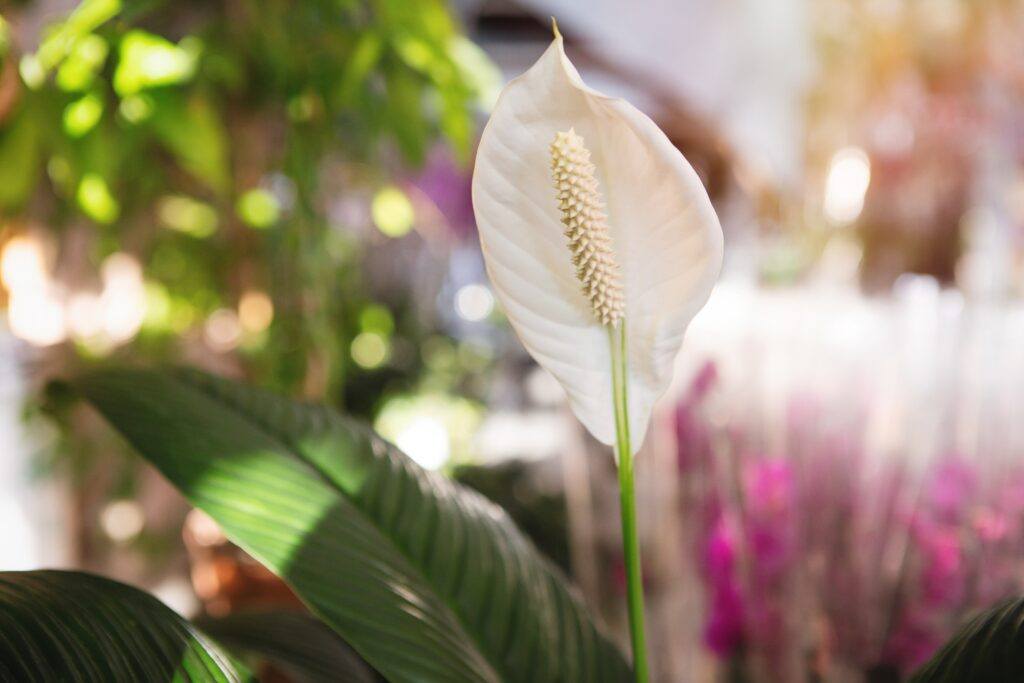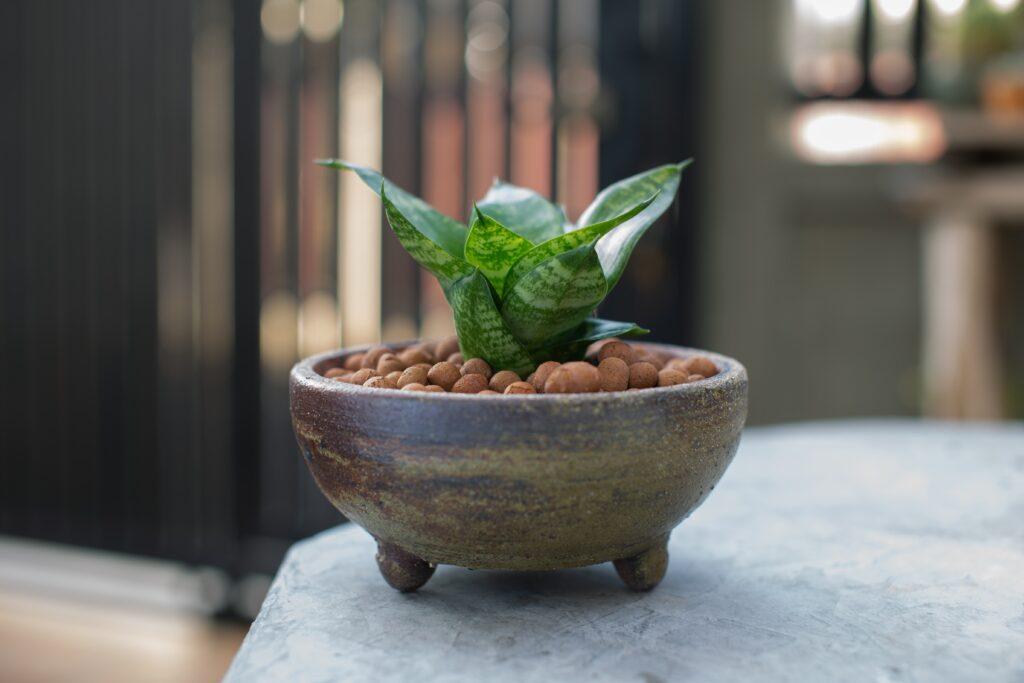
There are many great reasons to bring plants into your indoor spaces. Plants add beauty and warmth to any room of your home and can help you feel connected to nature even when you’re inside. In this article, we will discuss low-maintenance options for beginners and how to choose the right plant for your space. We will also talk about the benefits of indoor gardening such as creating a positive mood and a sense of accomplishment as you watch them grow and thrive.
The key to success with houseplants lies in choosing the right plants that fit your lifestyle. What makes a plant ‘easy’ in the context of indoor gardening is that it’s forgiving, adaptable, and mostly drama-free. Even if you live in a small home or apartment, there are great plants you can incorporate into your indoor space. These plants are also perfect for apartment dwellers looking for indoor plants for small spaces with low-maintenance needs.
Many people shy away from indoor plants because of a few common misconceptions—like the belief that they need a green thumb, or that plants will make your house messy. By choosing the right plants, anyone can grow a lush indoor space, regardless of experience or time commitment.
As we mentioned before, it is essential to customize your plant choices based on your lifestyle. What works for one person might not suit another, but there’s absolutely a perfect plant for everyone. Let’s pave the road to a vibrant, thriving indoor garden with a few simple guidelines and tons of encouragement!
Top 5 Low-Maintenance Indoor Plants

The Peace Lily is a great choice. Its graceful white blooms and lush green leaves aren’t just for looks. It’s a fantastic air purifier and thrives even in low-light conditions-adding striking white blooms to glossy, oval leaves.
If you’re concerned about air quality, the Snake Plant, also known as ‘Mother-in-Law’s Tongue’, lives up to its reputation as one of the toughest plants out there. It doesn’t just survive neglect; it seems to appreciate it, actively filtering indoor air all the while. Snake plants are practically indestructible—learn more in our snake plant care guide.
For those prone to forgetting to water, the ZZ Plant is practically indestructible. Its glossy leaves remain vibrant as it barely blinks at drought conditions, making it the ultimate pick for the forgetful or frequent traveler.
Fast-growing plants like Pothos can jazz up any space with their cascading vines that seem to extend overnight. With minimal light requirements and a tolerance for various environments, Pothos is both resilient and rewarding.
The Monstera, with its iconic split leaves, adds a touch of tropical beauty to your home without demanding too much effort. It grows well in common household conditions, just needing a bit of indirect light and occasional watering.
Each of these plants brings something unique to the table, whether it’s air purification, ease of care, or aesthetic appeal. They are low-maintenance champions, proving that having an indoor garden can indeed be simple and stress-free.
Choosing the Right Indoor Plant for Your Space

Figuring out which plant fits best in your home is more about knowing your environment and personal habits than anything else. You don’t want to end up with a sun-craving plant in a shadowy apartment or a thirsty fern left high and dry.
The first thing to consider is light. Maybe you’ve got a room that gets drenched in sun all day or perhaps there’s just a single window peeking through the curtains. Matching your plant’s light needs to what you’ve got naturally is half the battle. Low-light plants like Snake Plants or Peace Lilies thrive without direct sunlight, making them adaptable to spaces that are shorter on sunrays.
Think about how much time you can give to your indoor garden. If you barely have time to water once every week or so, the ZZ Plant could be your new best friend. But if you have more time, perhaps try a Monstera, which appreciates a little more water and indirect light.
Be open to experimenting; matching plants with your daily routine could also be about trial and error. Some folks find that combining different types of plants can create a balanced green space that’s not only pleasing but also practically cares for itself. For example, pairing a plant that loves water, like a Peace Lily, with a drought-tolerant ZZ Plant could mean you’re watering less than if you have two water-loving plants.
Don’t let fancy plant care terms scare you away. Knowing what ‘aeration’ or ‘humidity needs’ mean can help tons, but at its core, it just means being aware of your plant’s basic conditions and tweaking what you can to keep them happy. There’s no need to stress about getting it perfect right away—plants are surprisingly adaptable, just like us.
Enhancing the Indoor Environment with Greenery

Houseplants have a knack for making indoor spaces feel more alive and vibrant. They’re not just for decoration; they play a surprisingly significant role in enhancing air quality at home. Plants like the Snake Plant and Peace Lily are known for their air-purifying properties, helping to remove toxins from the air and making the indoors healthier to live in.
Beyond physical benefits, there’s an emotional lift too. Tending to plants can be remarkably calming, offering a sort of companionship that people often overlook. Watching a plant thrive can be a delightful, uplifting experience, providing a sense of accomplishment that’s hard to beat.
When it comes to arranging your indoor jungle, think creatively. Your greenery can complement your home’s design, adding texture and color that evolves over time. From setting a Monstera as a centerpiece in your living room to adding trailing Pothos on shelves, there are endless ways to weave plants into your decor.
Creating a home eco-system can be as rewarding as it’s enjoyable. Consider how plants work together; placing a water-loving Peace Lily near a humidity-loving plant can create a self-sustaining network. Observing how these green elements interact can give insight into nature’s impressive adaptability.
Plants don’t just sit pretty—they thrive alongside us, sometimes silently cheering up our space while contributing to the household’s overall vibe. Whether you’re looking to purify air, boost your mood, or just add a splash of green, indoor plants are one of the simplest ways to elevate your daily life.
For added ease, consider using smart indoor garden kits to automate light and watering while you build confidence.

Hey Kathryn,
I just finished reading your article, “5 Easy Indoor Plants For Beginners,” and I gotta say, you crushed it! This isn’t just some fluffy list; you’ve laid out a fantastic roadmap for anyone looking to bring some green into their space without turning it into a high-maintenance nightmare.
I especially loved how you highlighted the psychological benefits of indoor gardening, that “sense of accomplishment” and the calming effect of tending to plants. It’s so true! It’s not just about aesthetics; it’s about creating a living, breathing ecosystem in your home that genuinely boosts your mood. And the tips on matching plants to your lifestyle and environment? Pure gold. Nobody wants a sun-worshipping plant dying in a dark corner!
You made a strong case for why even the most “brown-thumbed” among us can succeed with plants like the Peace Lily, Snake Plant, and ZZ Plant. Those truly are champions for the forgetful or time-strapped.
This got me thinking, Kathryn, and I’d love to hear your take: For someone who’s still convinced they’ll kill anything green, what’s that one piece of advice you’d give them to get them over the hump and finally commit to their first indoor plant? And on the flip side, what’s a common “beginner” mistake you see that’s easily avoided if someone just knew about it upfront?
Seriously, fantastic work. This is the kind of content that turns plant killers into plant parents!
Eric
Eric,
You have asked the question I get most often when discussing plants with people you refer to as “brown-thumbed”. Most of the time I tell them that plants are like pets or babies. Before you take one on, you should find out what they need to thrive, and then give it to them. I also tell them that they would be surprised to know how many plants I have killed over the years.
Along that vein, I used to watch a TV gardening show years ago. The host was a master gardener and he showed the audience 2 shrubs that he purchased together and planted side by side. He said they were planted, watered, and fertilized the same. One of them was flourishing, but the other had died. He made the point that sometimes plants die even when you do everything right.
I think a person needs to evaluate how much time they have to devote to their plants and get one or maybe two of the easy to grow plants. Caring for them and feeling that sense of accomplishment will give them more confidence.
A beginner mistake I have seen a lot is overwatering or underwatering. That’s why it’s important to find out what your particular plants needs are and be able to plan for its care.
Indoor plants are a great way to bring life and freshness into your home, and for beginners, choosing low-maintenance varieties makes the experience enjoyable and stress-free. Five of the easiest indoor plants to care for include the snake plant, pothos, spider plant, peace lily, and ZZ plant. These hardy greens thrive in a range of light conditions, require minimal watering, and are forgiving if you forget them occasionally. Not only do they beautify your space, but many also help purify the air, making them perfect starter plants for anyone new to indoor gardening.
AJnaval,
Thank you for your comments; you seem to know a lot yourself. I liked your comment on some of the easiest plants to care for and how they are forgiving when your schedule is tight. Your right again that they are both beautiful and contribute to our air quality.